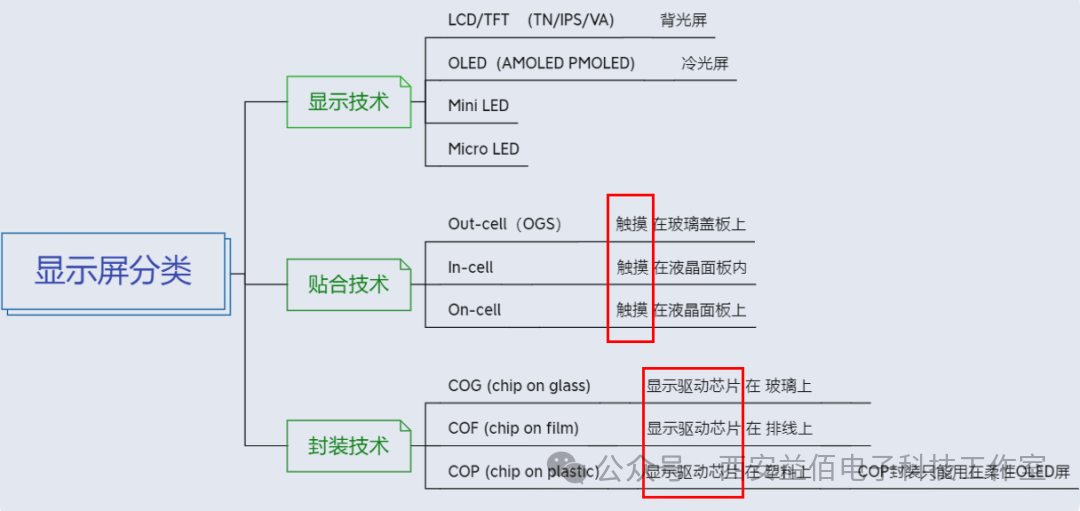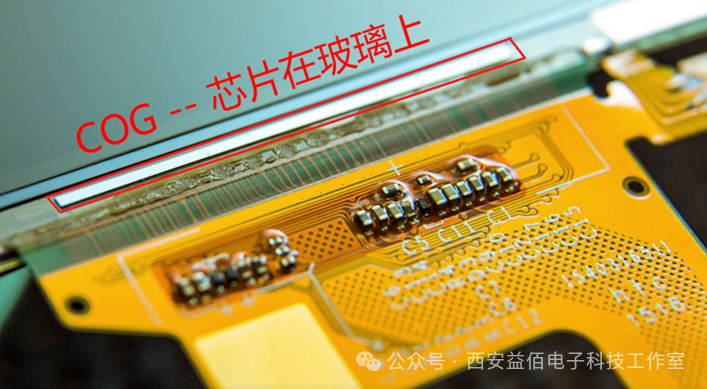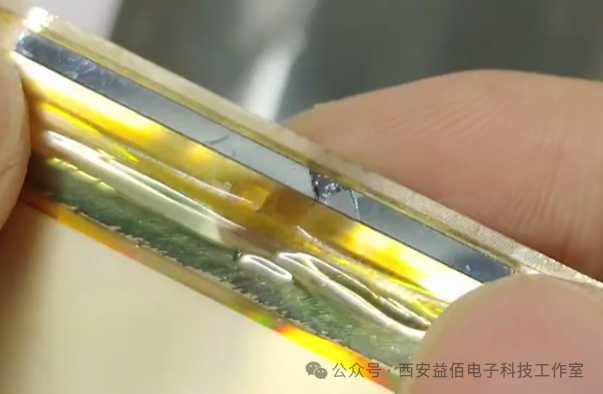When discussing screen technologies, terms like “COG”, “COF”, “COP”, “In-cell”, and “On-cell” are common. These terms relate to different technologies and construction methods of displays, and below I will explain the differences between them.

Mobile Display Technologies
1.LCD (Liquid Crystal Display): LCD is a widely used display technology in mobile phones and other devices. It uses a liquid crystal layer to control the passage and blocking of light to form images. LCD screens have lower manufacturing costs and are suitable for both large and small screens, but may be limited in contrast and color depth.<Also known as backlit screens>
2.OLED (Organic Light-Emitting Diode): OLED is a new type of display technology that uses organic materials to emit light and produce images. OLED screens have higher contrast, wider viewing angles, and deeper blacks because each pixel can emit light or turn off independently. This gives OLED screens an advantage in picture quality and allows for thinner and more flexible screens. However, OLED screens may have potential burn-in issues, especially when displaying the same image for extended periods.<Also known as cold light screens>
3.MiniLED: This is a new backlight technology that uses smaller LED backlight areas in LCD screens. This can provide better contrast, local dimming, and deeper blacks, thereby improving picture quality. Although MiniLED can enhance the performance of LCD screens, it still uses liquid crystals to control light transmission, so contrast and color may still be somewhat limited compared to OLED screens.
4.MicroLED: This is a display technology based on tiny LED pixels, where each pixel is an independent light source. This allows MicroLED screens to achieve higher contrast, a wider color range, and faster response times. MicroLED screens also have burn-in resistance, unlike OLED screens, which are more prone to burn-in. However, MicroLED technology is still under development, and manufacturing complexity and cost remain challenges.
Mobile Bonding Technologies

-
In-cell Technology: The touch sensor is directly embedded within the liquid crystal layer. This helps reduce the thickness of the display, but may affect touch performance.
-
On-cell Technology: The touch sensor layer is located on the surface of the LCD. It can provide better touch response, but the display may be slightly thicker.
-
Out-cell Technology: The touch sensor layer is located outside the display, separated from the display. This can provide better touch performance, but since the touch sensor layer is exposed to the external environment, it not only increases thickness but also introduces reflections and light refraction, and is affected by environmental factors (such as temperature, humidity, etc.), which can impact touch accuracy. Currently, mobile screens generally do not use this technology.
Mobile Packaging Technologies
1. COG (Chip-On-Glass) Display driver chips on glass
COG technology is a method of assembling display modules where integrated circuit chips (ICs) are directly connected to the glass substrate. This technology can reduce the size of the display module, improve display stability and reliability, and also reduce external connection wires. COG technology is commonly used in embedded systems, small-sized displays, and low-power devices.

2. COF (Chip-On-Film/Flex) Display driver chips on the flex line
COF technology is similar to COG, but the chip is connected to a flexible circuit (FPC) instead of being directly connected to the glass. Compared to COG, COF technology allows for lighter, thinner designs, larger screen ratios, and higher resolutions and picture quality. Currently, most mobile screens use COF technology.

3. COP (Chip-On-Plastic): Display driver chips on plastic (COP packaging can only be used on flexible OLED screens)
COP technology is a method of directly connecting chips to plastic substrates, typically used in specific applications such as certain small-sized, curved, or flexible displays. The Apple X series and later models use COP technology.

In summary, these terms relate to different constructions and technologies of displays, and their selection depends on specific application needs, design requirements, and cost considerations.
- – END –